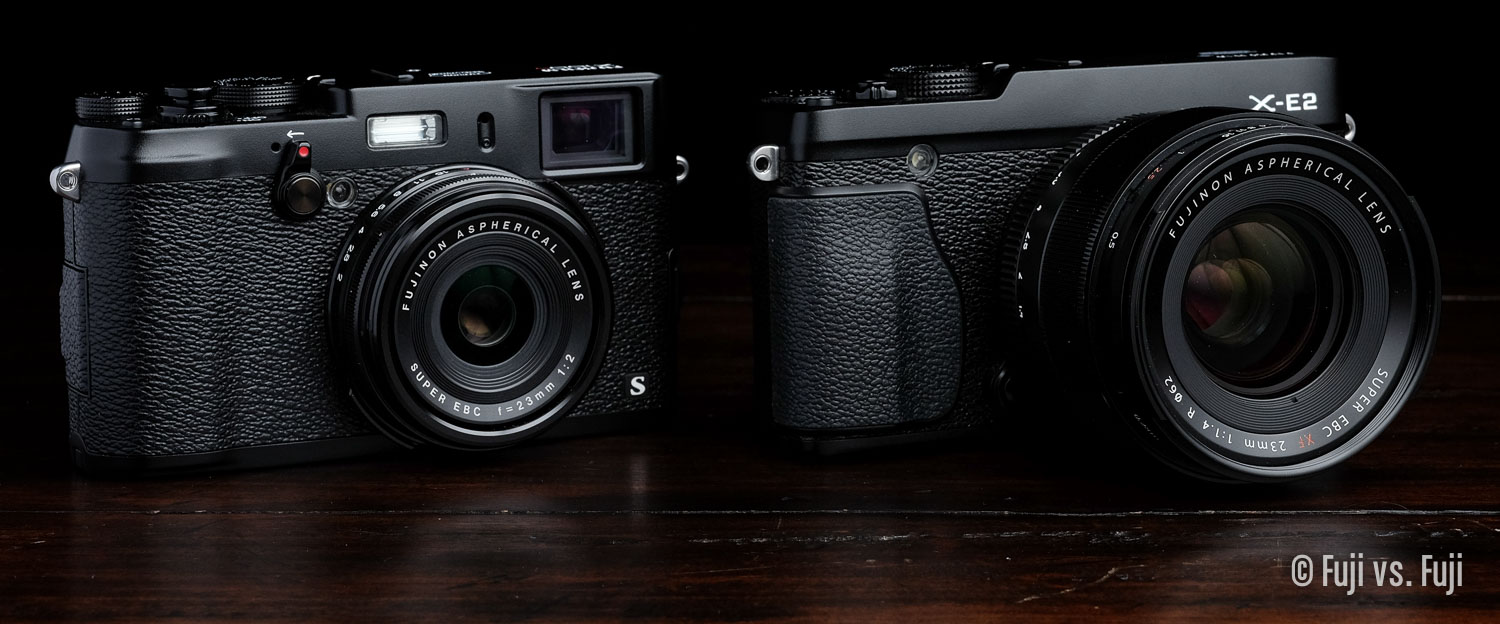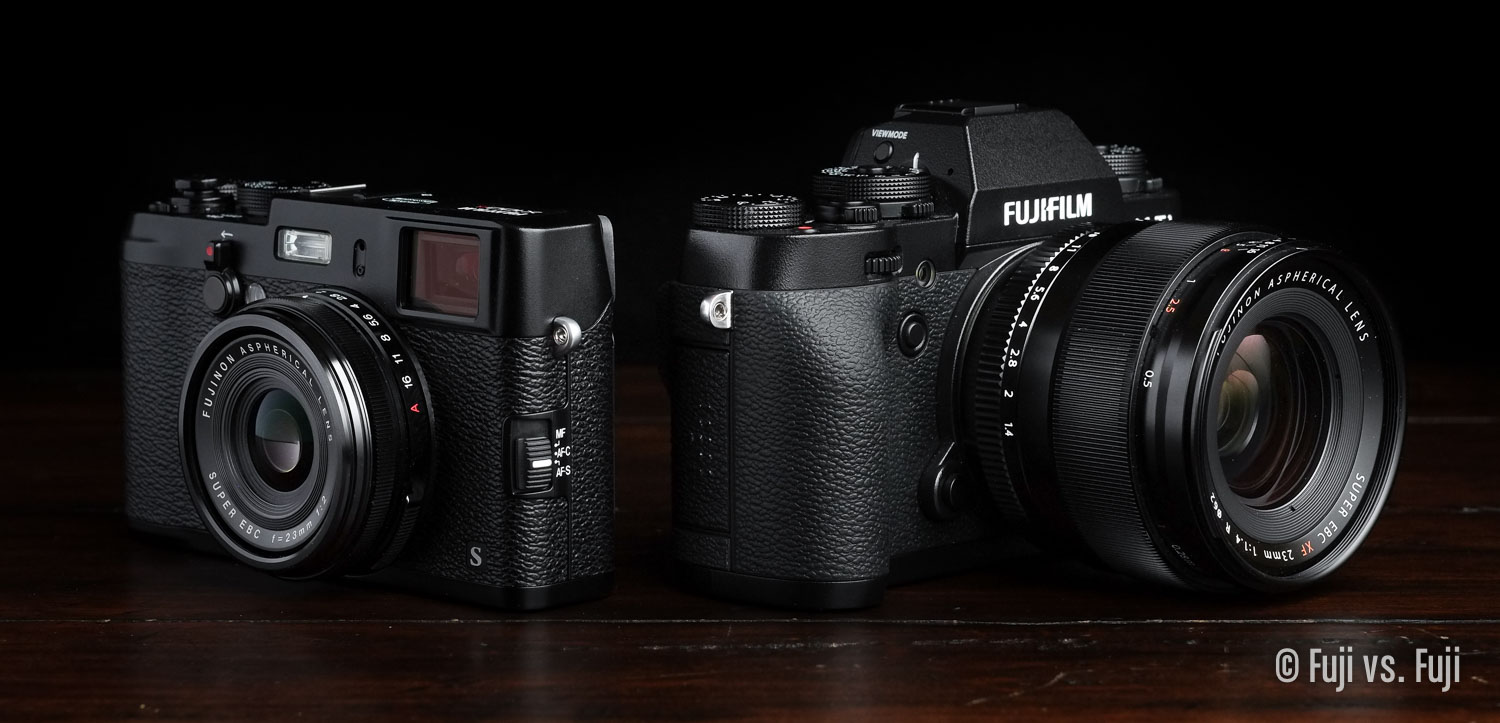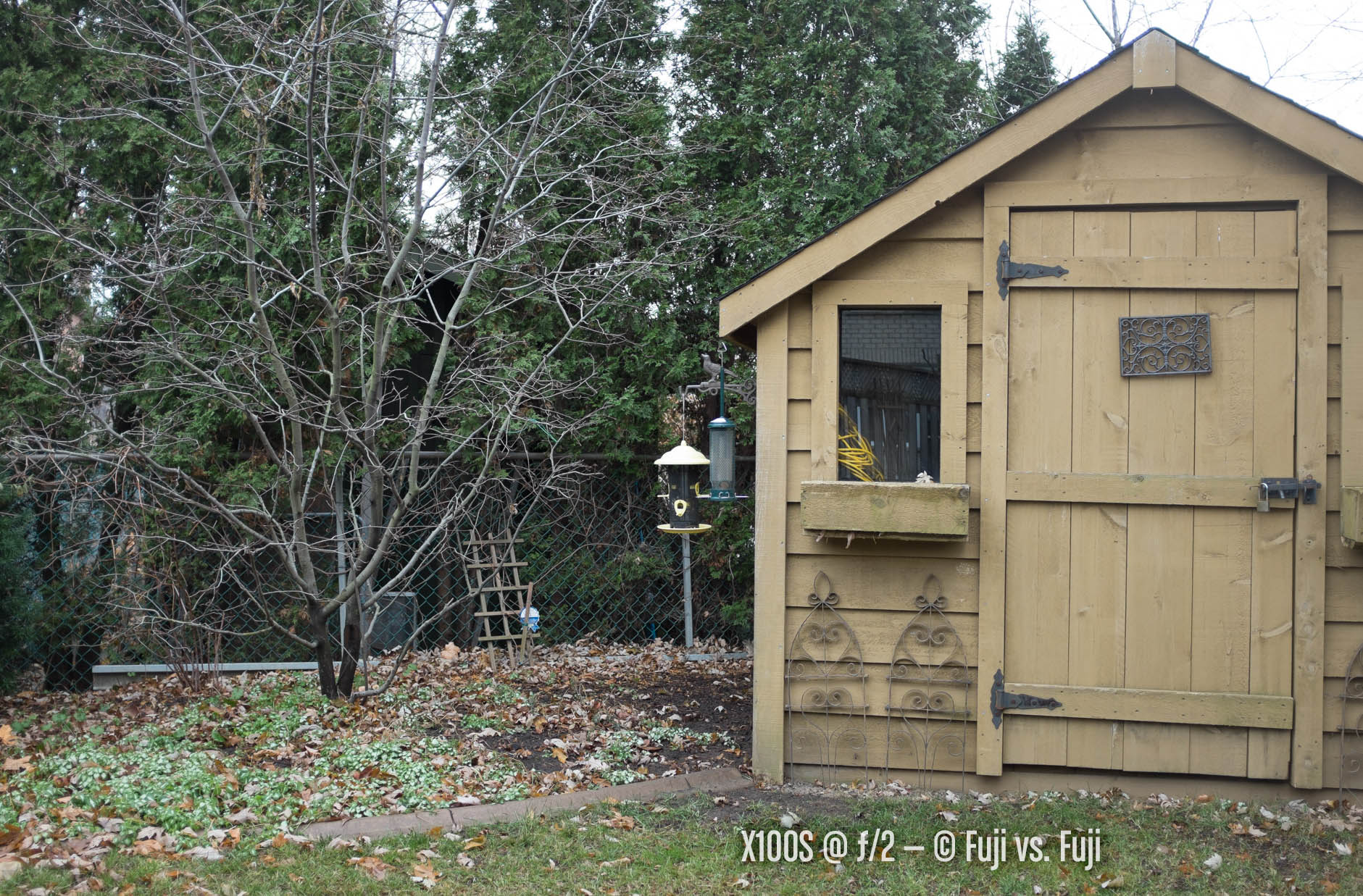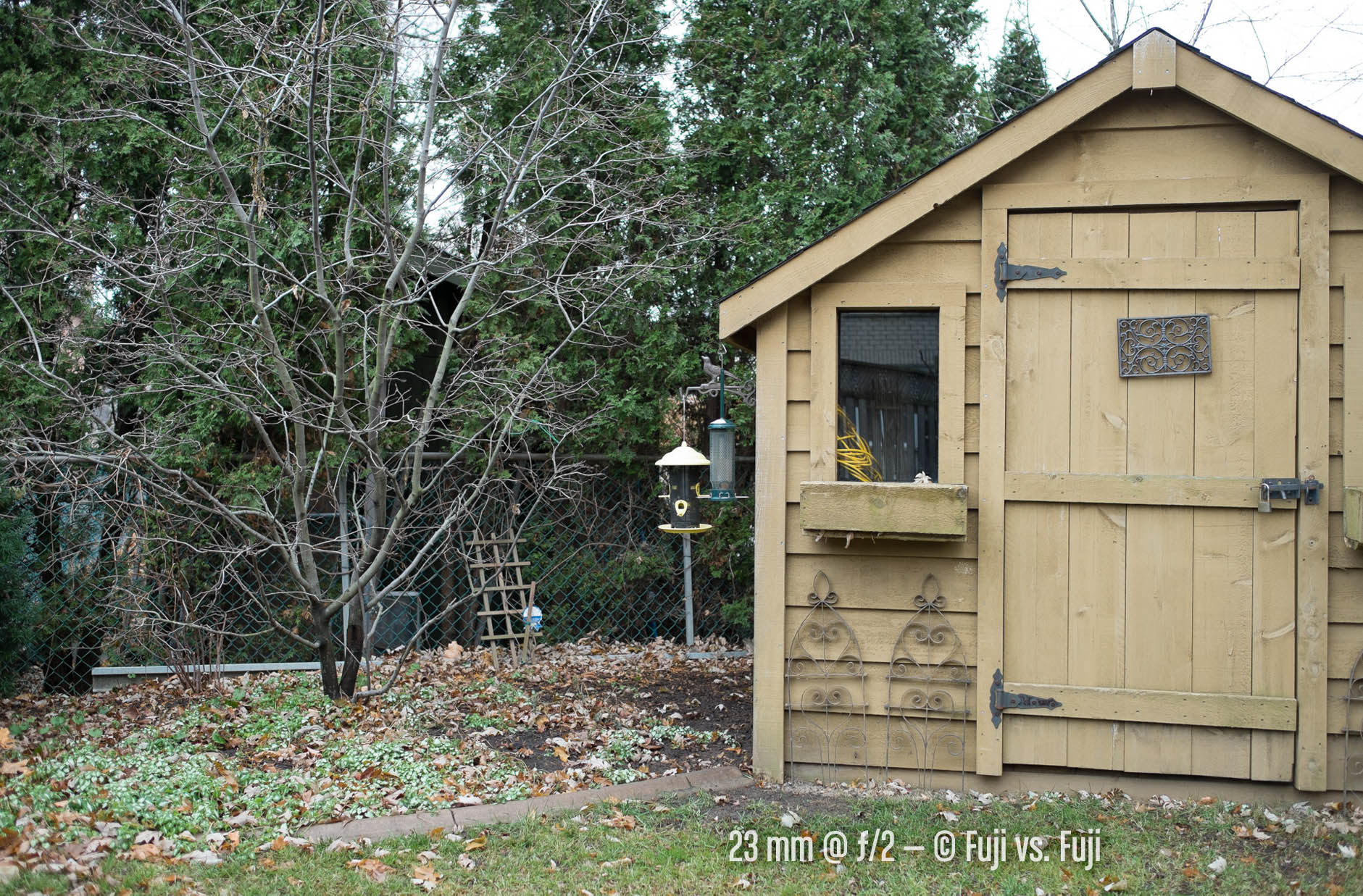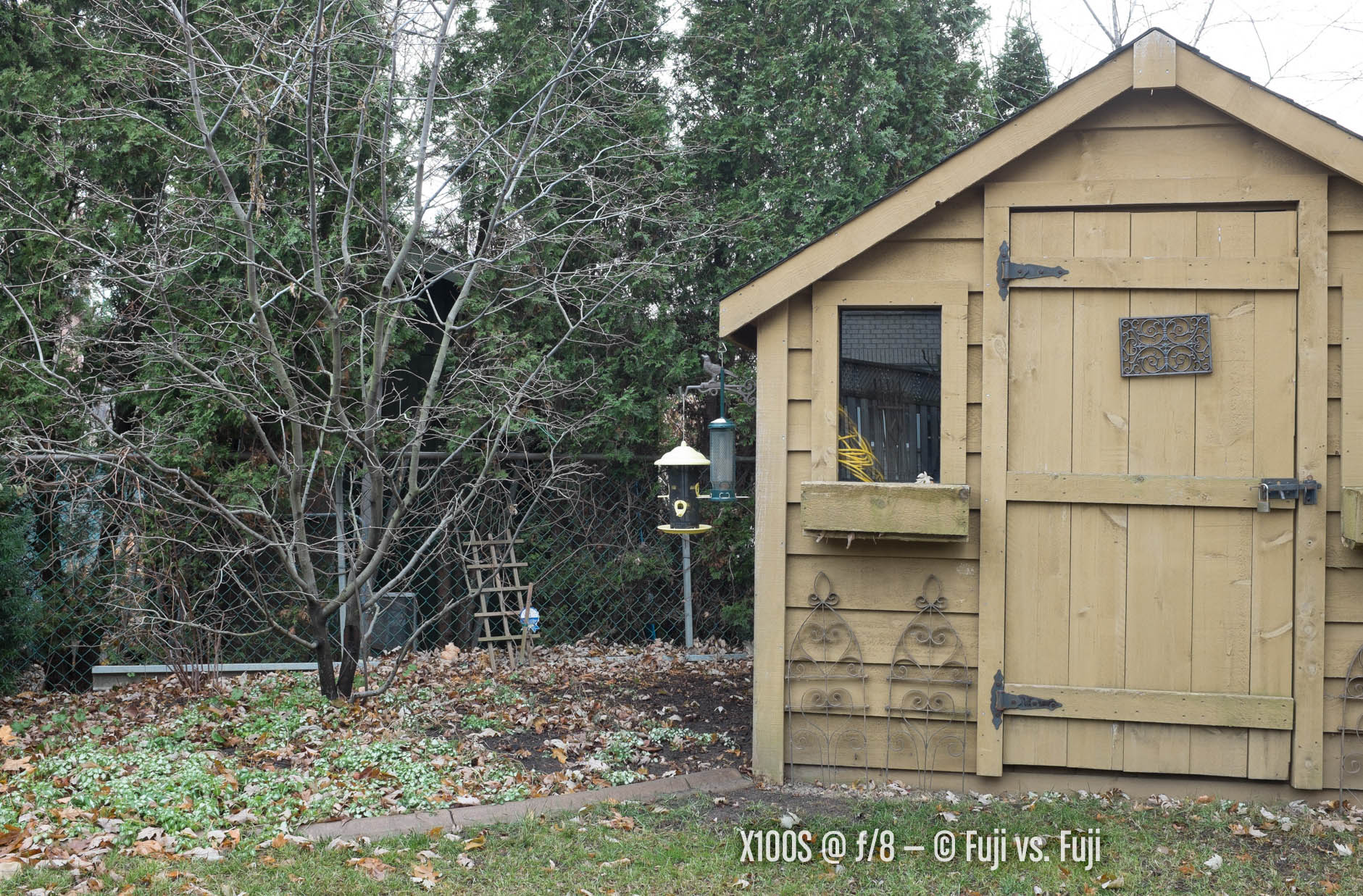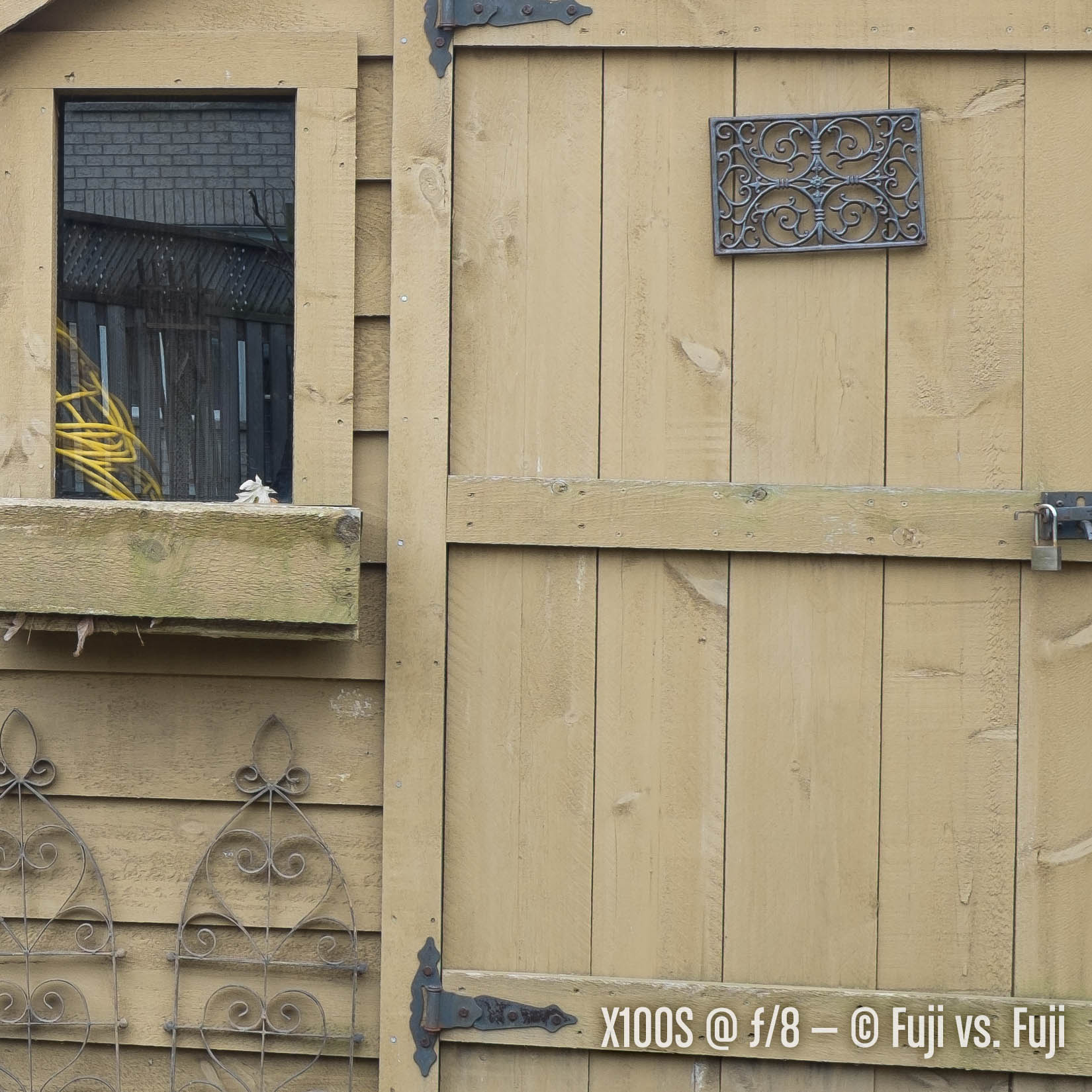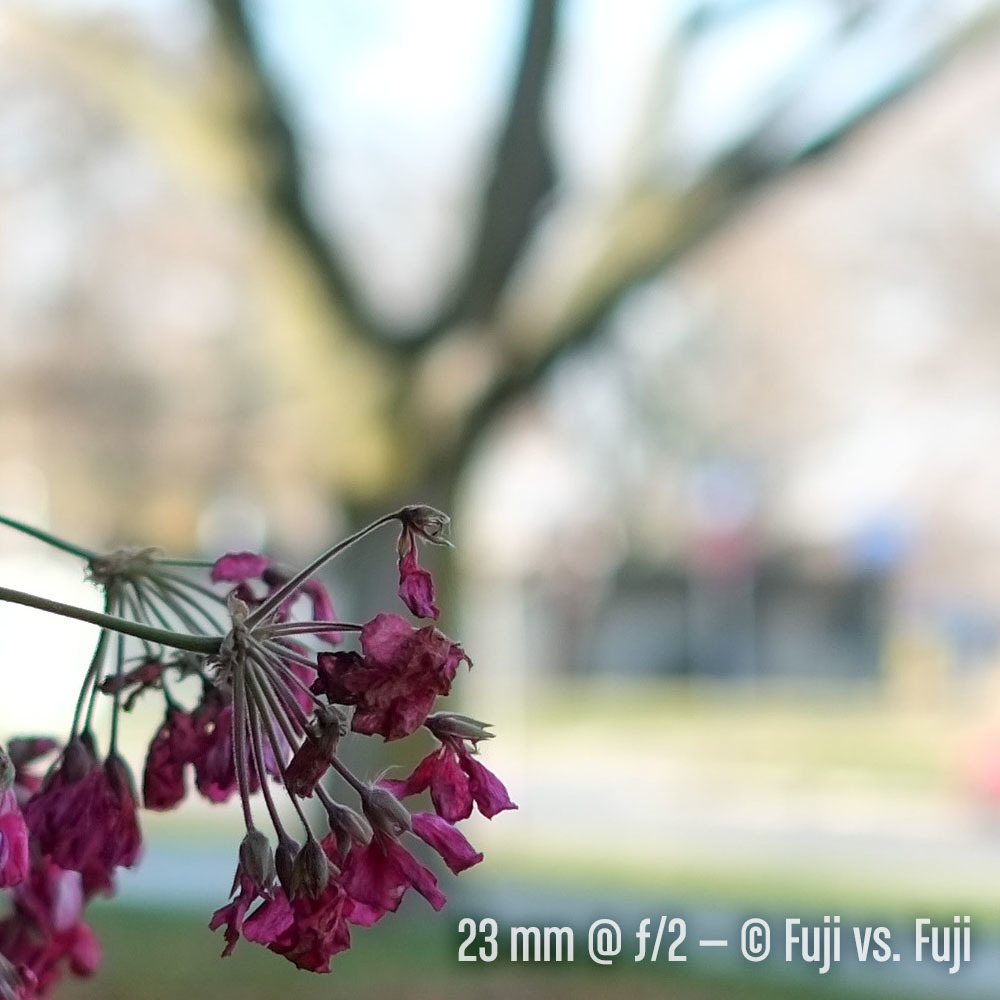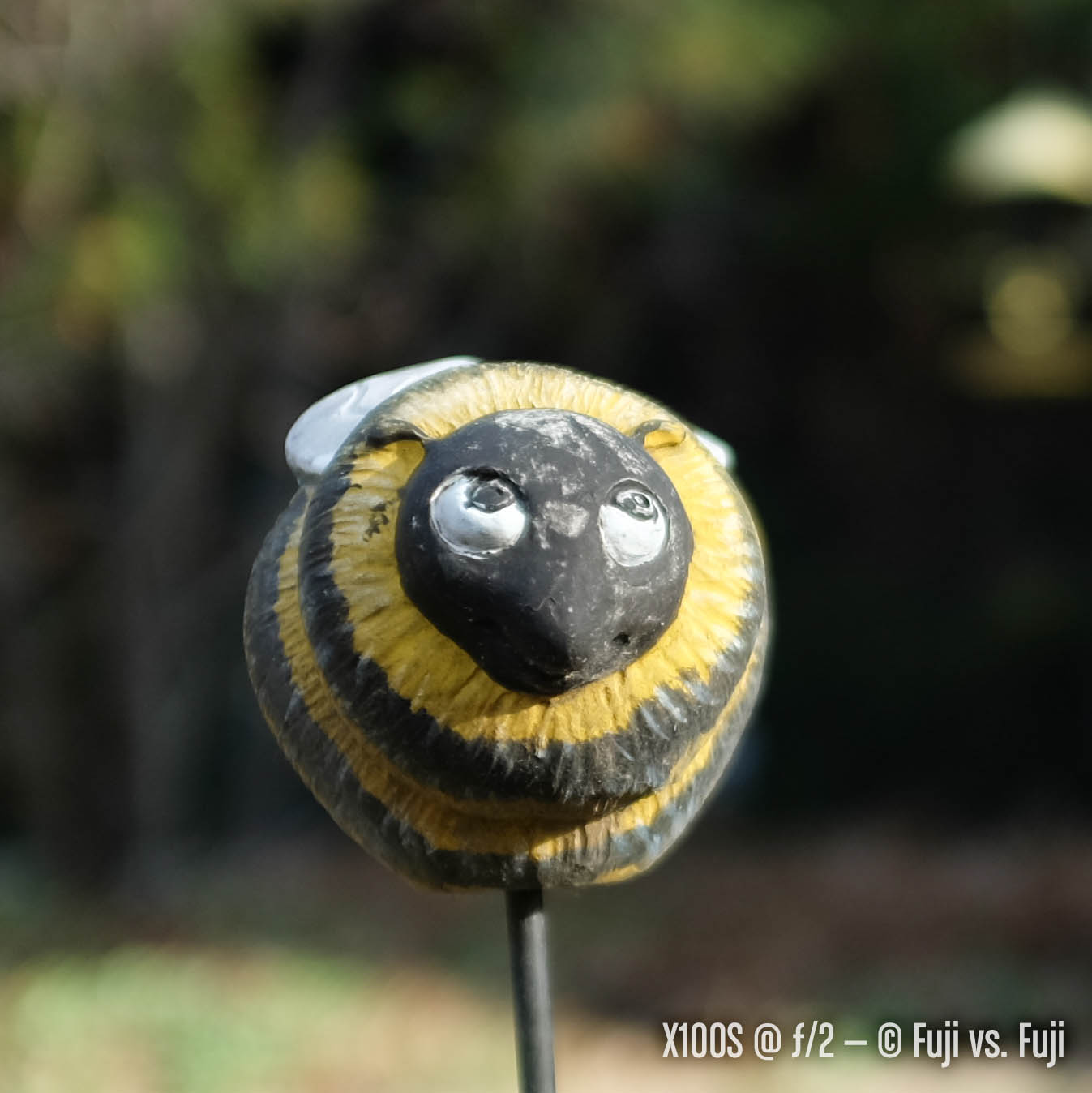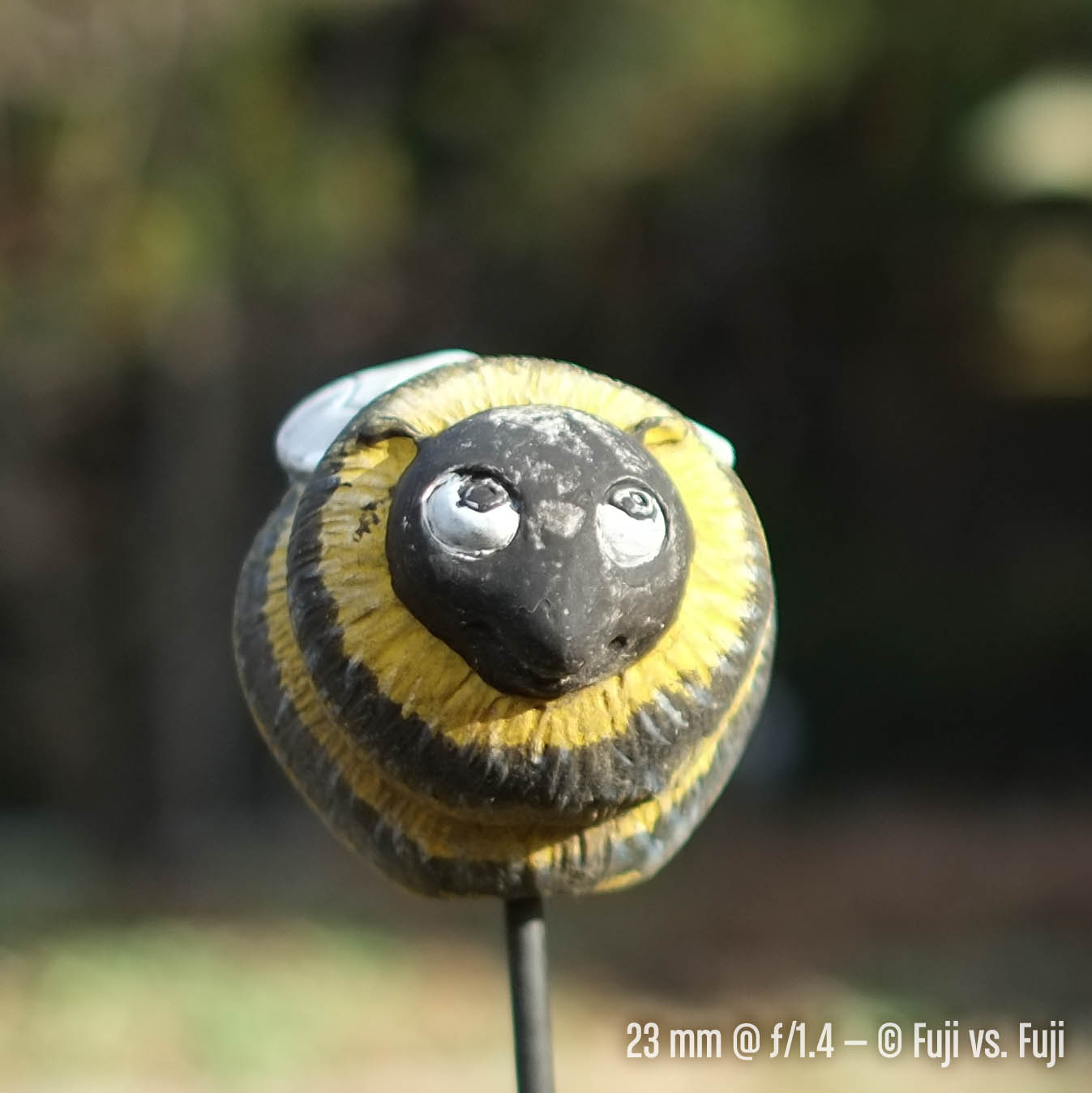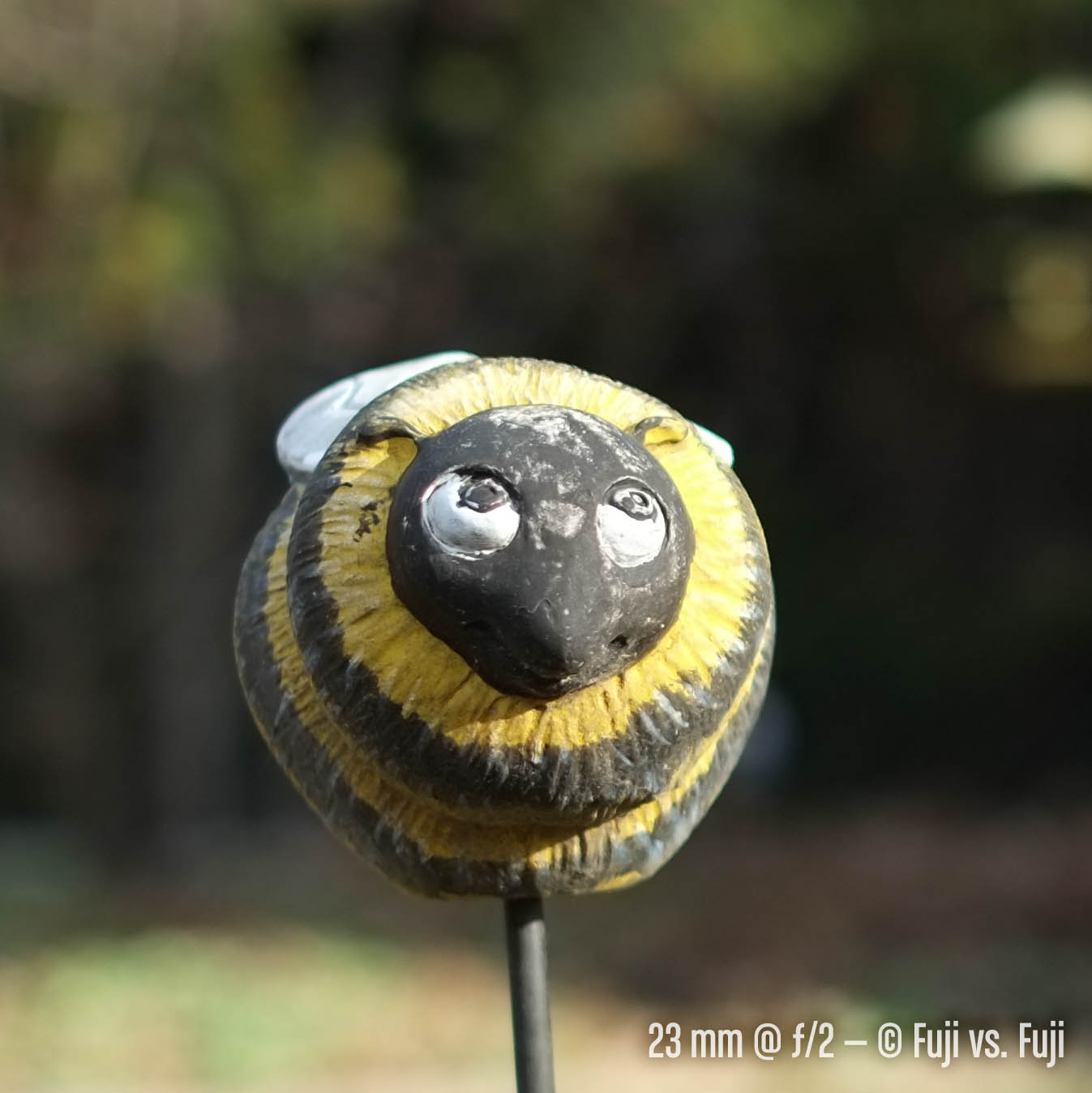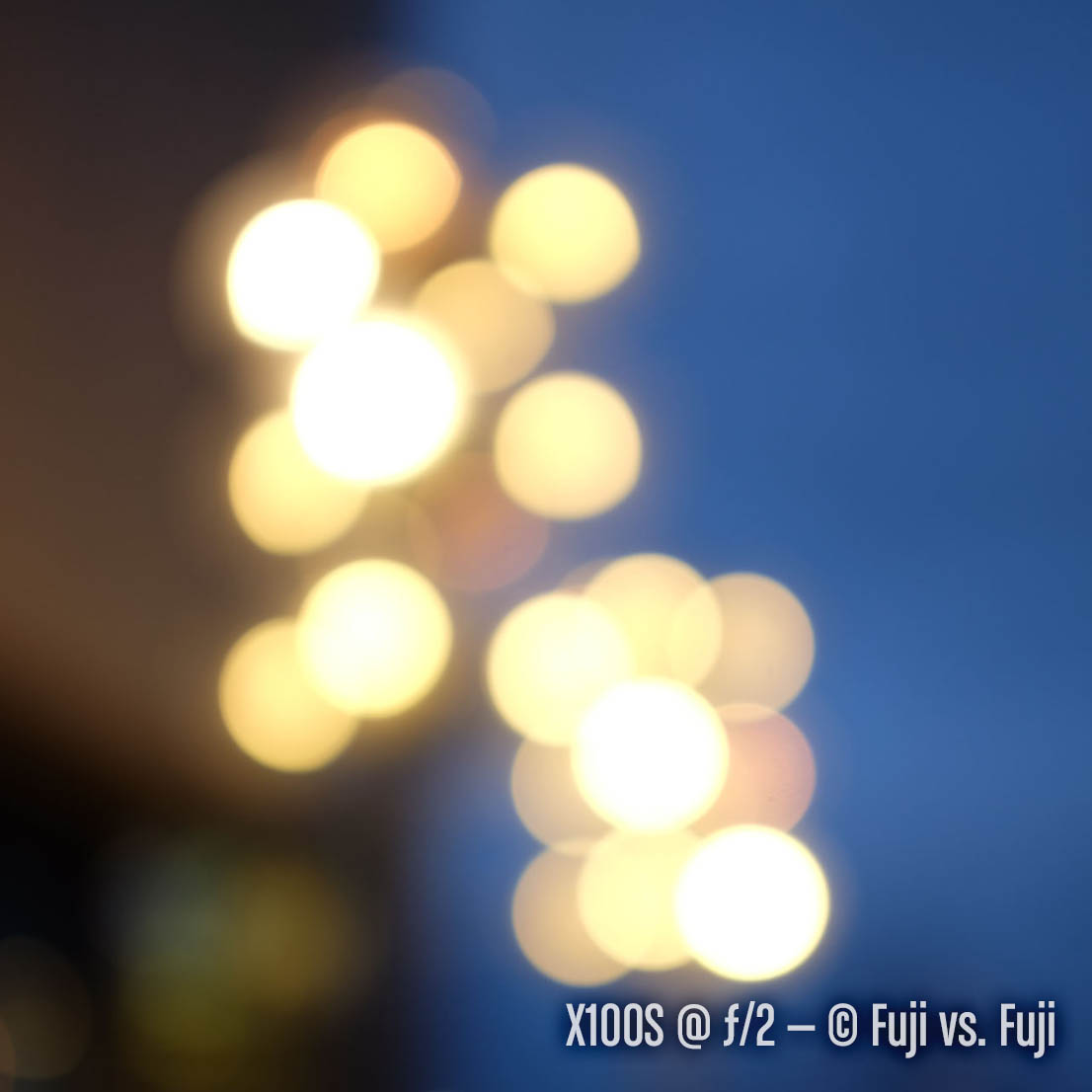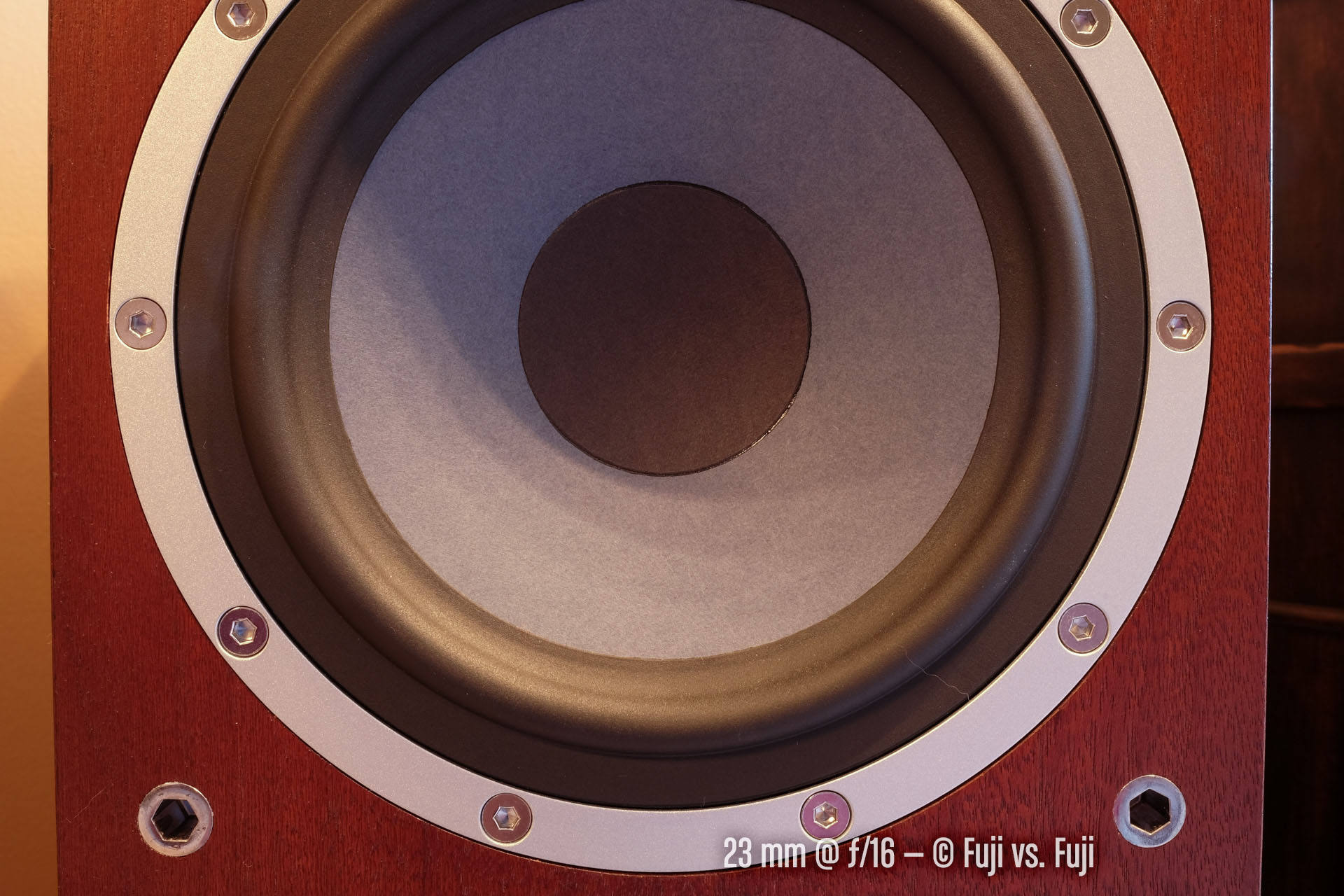This is a comparison between the 23mm FUJINON F/2 lens found in Fuji’s X100(S/T/F) and the FUJINON XF 23mm F/1.4
Originally published: 2013
Update to copy and charts: March, 2018
Introduction
Since this website’s inception, this article has been the most popular comparisons. Fuji fans are clearly interested to know one of two things:
- Should they buy a XF 23mm F/1.4 or spend a bit more and buy an X100?
- Should they add the XF 23mm F/1.4 to their kit if they already own an X100
Before testing the XF 23mm F/1.4 (Review), I’d have said #1 was a valid question, with #2 being a problem only for those with money to burn. Now that I’ve used both the X100 in all its iterations, and the XF 23mm F/1.4 extensively, I can say that both options are equally valid. The XF 23mm F/1.4 is that good, and the X100 is interesting enough to have along side it. Of course you can get along just fine with one or the other. Choose whichever suits your needs better.
Specifications
| X100S 23mm F/2 | XF 23mm F/1.4 | |
|---|---|---|
| Announced | January 7, 2013 | September 5, 2013 |
| Released | March, 2013 | October, 2013 |
| Lens Construction | 8 elements in 6 groups 1 aspherical glass molded lens |
11 elements in 8 groups 1 aspherical element |
| 35mm Equivalent | 35mm | 35mm |
| Angle of View | 63.4˚ | 63.4˚ |
| Aperture Range | f/2 - f/16 | f/1.4 - f/16 |
| Focus Range | 0.5m (10cm Macro) - Infinity | 0.6m (28cm Macro) - Infinity |
| Filter Size | 49mm | 62mm |
| Includes Camera | Yes | Camera sold separately |
If you’d like to purchase and X100, XF 23mm F/1.4, or anything else for that matter, please consider using one of the Amazon affiliate links below. The price is the same for you, but a small percentage of the purchase price goes to me, which helps keep this site going. Thank you.
Handling
There are definite pros and cons to each lens in the handling department. For the XF 23mm F/1.4 there’s a proper focus scale which makes zone focusing much easier. With an X100 you’re forced to either look at the LCD or peer through the viewfinder to see where you’re focused.
The size of the XF 23mm F/1.4’s focus ring certainly makes it easier to use. The focus ring is much wider and the aperture ring is easier to get at without accidentally changing focus as happens easily on an X100. The first two iterations of the X100 lacked ⅓ stop increments via the aperture ring. Owners of those cameras need to set a full stop aperture, and then fine-tune it via the rear toggle. This was changed with the release of the X100T.
Size is also the XF 23mm F/1.4’s biggest con. The 23mm f/1.4 protrudes from your camera enough to get you noticed. Nobody’s going to mistake this for a point and shoot. An X100 is much smaller at just barely over half the depth, and considerably lighter by 165g on an X-E3, probably the smallest camera you’d want to use the XF 23mm F/1.4 on. It’s also heavy. While an X100 has a much more dense feel to it, especially compared to an X-E body, it’s the lightest way to get to a 35mm equivalent with a Fujifilm camera. The XF 23mm F/1.4 can also make and X-E camera feel a little bit front-heavy. One-handed operation becomes tougher. This is less of a problem on cameras like the X-Pro, X-Thanks, and X-H bodies.
Weight of X100F compared to interchangeable bodies with the XF 23mm F/1.4 mounted
The XF 23mm F/1.4 is really more appropriate for bodies like the X-T. It’s not so large that it props the body up, and the weighting of this body and lens combination is excellent. If you have an X-T already, the XF 23mm F/1.4 will be even tougher to pass up—unless size is absolutely critical.
Sharpness
Below are images comparing lens sharpness. I’ve isolated f/2 and f/8 so you’re not wading through countless images and crops. The XF 23mm F/1.4 comes out very much on top, and the story is the same at the other apertures. There seems to be a lot of flare happening on the X100 image, which is somewhat surprising. Hoods were used for all of these test images.
Equally interesting are the distortion characteristics of each lens. I encourage you to click to enlarge the gallery below and then arrow back and forth between the images. The difference is huge.
X100 vs. XF 23mm F/1.4 @ f/2
X100 vs. XF 23mm F/1.4 @ f/8
Crops
As mentioned, there is a huge difference in distortion with this lenses. This made it difficult to align the crops. Another thing I’ll note, particularly in the XF 23mm F/1.4 @ f/8, the X-Trans sensor is having no trouble rendering detail in the greens of the hedges in the background.
TheXF 23mm F/1.4 shows it’s strength here. It’s noticeably sharper, shows much less distortion, and doesn’t exhibit the flaring issues the 23mm FUJINON F/2 on the X100 seems to.
Bokeh (and Sharpness)
Next we’ll see how much of a difference f/1.4 on the 23mm makes in out-of-focus rendering. I’ve chosen a rather bland subject matter, but it illustrates the bokeh characteristics of each lens in a situation that pushes the dynamic range to the limit.
X100 vs. XF 23mm F/1.4 @ f/1.4 and f/2
The XF 23mm F/1.4 is sharper at f/2 and f/1.4 than the X100 is wide open. Note that the XF 23mm F/1.4 shows a ton of chromatic aberration on the stems of the flower just behind the flower that’s in focus. By f/2, they are mostly gone. The X100 appears to do a much better job of correcting chromatic aberration. This is to be expected given how tightly integrated the X100S and its fixed lens are.
The bokeh from both lenses here are pleasing enough to my eye. Getting up to f/1.4 does make a noticeable difference though.
There’s some good stuff in the next frame that helps with making a comparison, like the windows of the house and the rear lights on the car. Again, opening up to 1.4 makes a noticeable difference, but only if you’re switching back and forth between the images quickly. Towards the edge of the frame, the X100 gets a little more “nervous” and isn’t quite as pleasing as the XF 23mm F/1.4. You need to be peeping pretty hard to notice this kind of difference.
Bees
Another close focus comparison. The XF 23mm F/1.4 is sharper wide open than the X100 is. Stopping the XF 23mm F/1.4 down to f/2 sharpens it up even more. This is definitely one area where you get your money’s worth with the interchangeable prime.
Light orb or “bokeh ball” rendering.
These shots were handheld. Not much to see here, really. The XF 23mm F/1.4 renders bokeh balls ever so slightly smoother, but the X100 does remarkably well.
Close Focus
The X100 is capable of focusing much closer than the XF 23mm F/1.4 because of how close the lens elements are to the sensor. The images below illustrate just how big a difference it is. To capture these images, each camera was focused manually to the closest setting. I then slowly dragged the tripod away until focus peaking made the blue of the speaker cone shimmer. They were shot at f/16 in order to get as much in focus as possible. Particularly with the X10S, at a distance like this, depth of field is razor-thin.
Conclusion
Overall, the XF 23mm F/1.4 outperforms the X100 in my tests. This is to be expected given the lens retails for 70% of what an X100 does at the time of writing. The X100 holds its own though and things like the built-in ND filter, leaf shutter, and close-focus capabilities might make it worth taking over, or in addition to the XF 23mm F/1.4.


